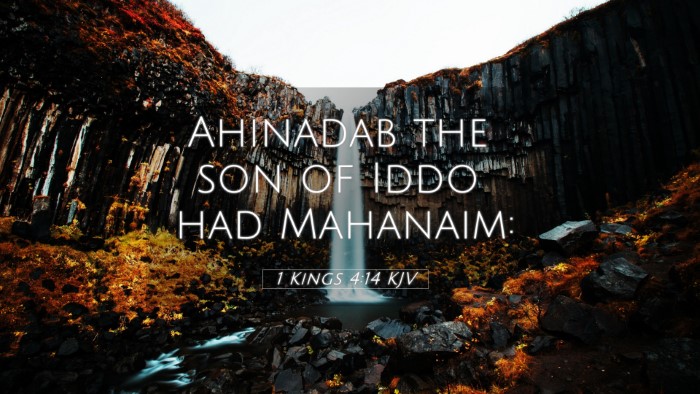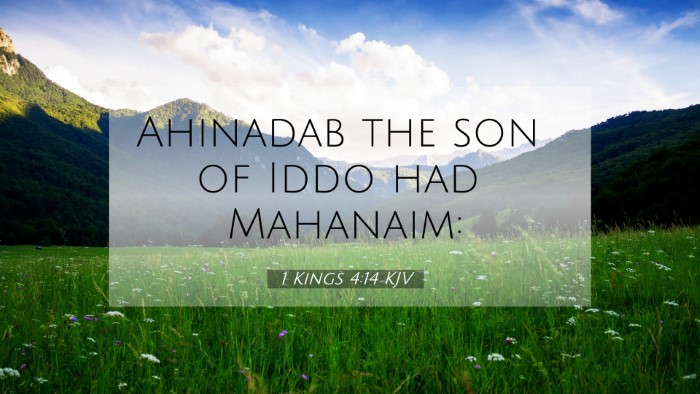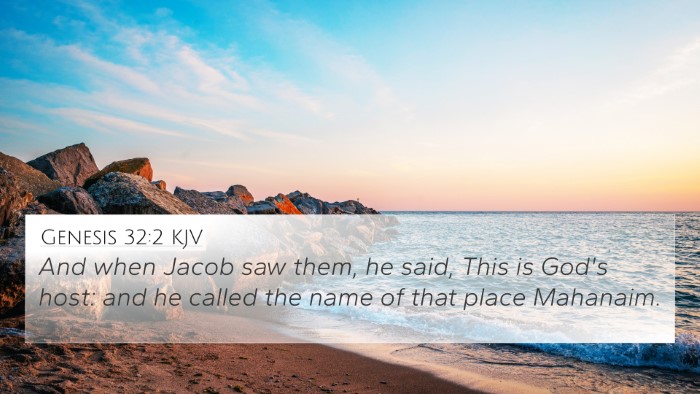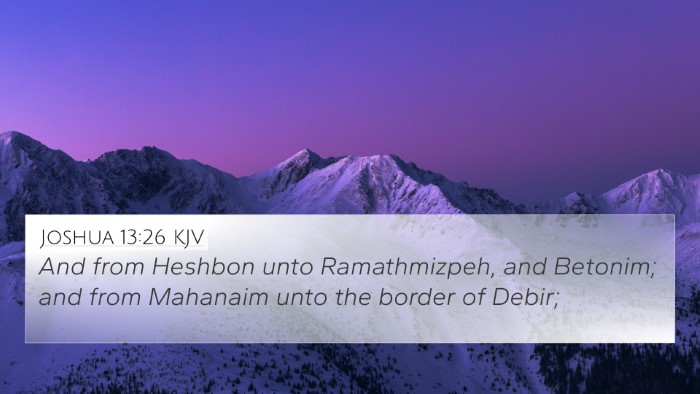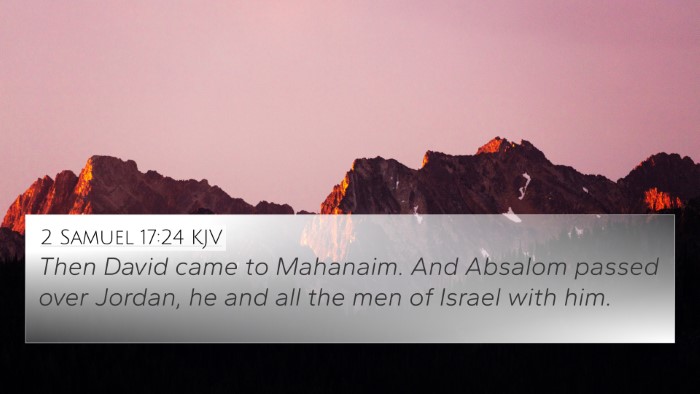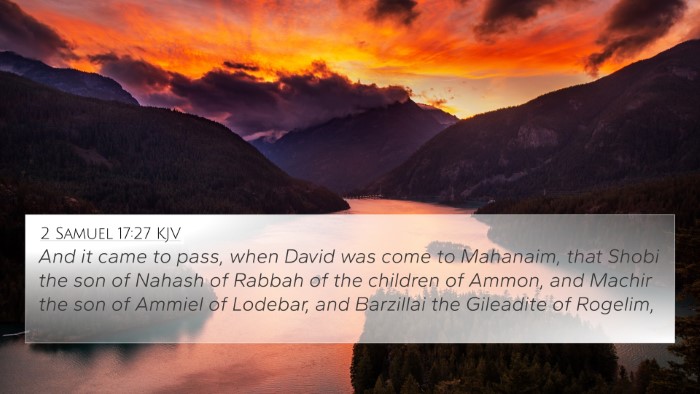Understanding 1 Kings 4:14
Bible Verse: "And Ahijah the son of Ahitub was the priest at Shiloh." (1 Kings 4:14)
Summary of the Verse
This verse introduces Ahijah, a notable figure in the priesthood during the reign of King Solomon. Ahijah's role as a priest at Shiloh highlights the importance of the priestly duties in guiding the people spiritually and maintaining their relationship with God.
Commentary Insights
Commentaries from historical theologians provide depth to the understanding of this verse:
-
Matthew Henry: Henry highlights the significance of Ahijah's lineage and the priestly duties in Shiloh, noting that despite his priestly position, it was ultimately God who guided the actions of the kings.
-
Albert Barnes: Barnes elaborates on the position of Ahijah, connecting him to the prophetic tradition that often guided leaders in Israel. Ahijah is depicted as a figure through whom God speaks, emphasizing the meshing of prophecy with priestly duties.
-
Adam Clarke: Clarke points out the geographical significance of Shiloh, the former center of worship before Jerusalem, symbolizing the transition of God's chosen place for spiritual guidance during Solomon's era.
Thematic Connections
This verse embodies several themes prevalent throughout the Bible, including:
- Divine Guidance: The presence of a priest signifies the ongoing need for divine guidance, which parallels the roles of priests in other parts of Scripture.
- Prophecy vs. Kingship: Ahijah's dual role invites a comparative analysis with prophets like Jeremiah and kings like David and Solomon, focusing on how divine counsel influenced leadership.
- Covenant Community: Ahijah's stewardship is tied to Israel’s covenant with God, mirroring themes from Exodus and Leviticus regarding the role of priests in maintaining holiness.
Cross References
This verse shares meaningful connections with several other biblical texts, enhancing its overall understanding:
- Exodus 28:1: Discusses the role of priests and their garments, which foreshadow the priestly duties later fulfilled in Israel.
- 1 Samuel 1:3: Mentions Shiloh as a place of worship, linking Ahijah's role directly to a significant historical context.
- 1 Samuel 2:35: God’s promise of establishing a faithful priest connects to Ahijah's priestly lineage.
- Jeremiah 1:6-7: Discusses prophetic calls similar to Ahijah’s role, illustrating the importance of prophetic guidance within the priesthood.
- 2 Chronicles 34:9: Refers to the priestly roles within Jerusalem, drawing a contrast with Shiloh’s earlier significance.
- Hebrews 7:11: Explores the priesthood in a new covenant context, inviting reflection on the continuity of priestly roles.
- 1 Timothy 2:5: Foreshadows the ultimate high priest, uniting the significance of Ahijah's role with Jesus Christ.
Inter-Biblical Dialogue
The mention of Ahijah brings forth a dialogue between the Old and New Testaments, where priesthood and prophetic vision intermingle. For instance:
- Links to the New Testament: The priestly duties observed in the Old Testament serve to illustrate the arrival of Christ as the ultimate mediator of the new covenant.
- Connections with Gospels: Ahijah’s prophetic significance can be seen reflected in the ministry of Jesus, who often interacts with religious leaders and fulfills the roles anticipated by Old Testament prophecies.
- Comparative Study: Analyses of the prophetic texts with Ahijah’s mention provide insights into the evolving nature of leadership in Israel and its fulfillment in Christ.
Conclusion
The mention of Ahijah in 1 Kings 4:14 serves not only to introduce an important character but also to weave a broader understanding of the interconnections between various scriptural texts. This verse highlights the importance of divine guidance through priests and prophets, emphasizing that God's plan transcends individual roles and reaches into the heart of covenantal relationship with His people.
Tools for Bible Study
For those seeking to delve deeper into Bible verse connections, here are some recommended tools:
- Using a Bible concordance can help identify themes across different books.
- A Bible cross-reference guide is invaluable for finding linked scriptures.
- Employing cross-reference Bible study methods enables readers to see the relationships between texts more clearly.

